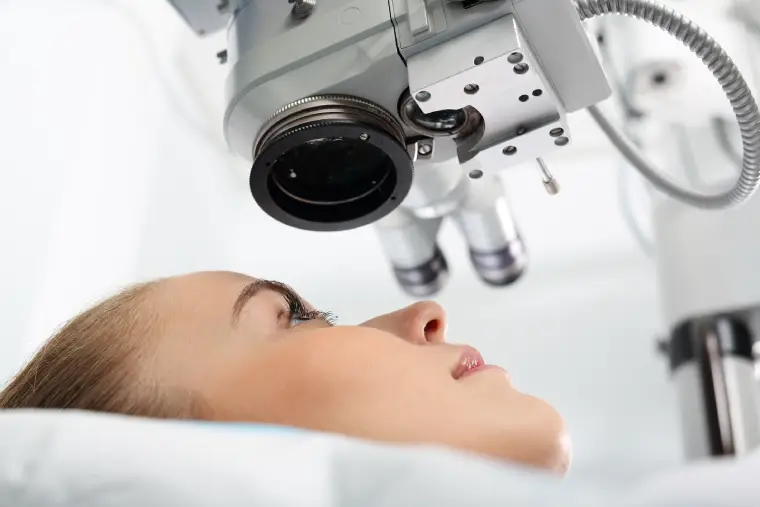Select Language
Contact Form
ReLEx SMILE PRO
The ReLEx SMILE laser provides results close to natural for high myopia, allowing all surgical steps to be performed in a single laser procedure without the use of a blade.
Have Your Eyes Checked Once a Year
Do not neglect your eye health; early diagnosis saves lives.
Healthy Eyes, Healthy Future
Children's eye health monitoring should be conducted regularly according to specific developmental stages, not just when a complaint arises. Eye diseases can progress without symptoms, and the chance for treatment may be delayed.
What is Valeda Laser Treatment? Treatment for Dry Type Macular Degeneration
Valeda laser treatment, a method used to treat dry type macular degeneration, targets damaged cells in the retina to support their healing, and it is an FDA-approved laser treatment method.
What is Congenital Cataract?
Congenital cataract is a health issue that can arise at birth or in the early years of childhood. It signifies a disruption in the transparency of the lens and can affect one eye or both eyes.
Strabismus Diagnosis and Treatment Process
Strabismus is a condition that causes both eyes to look in different directions; this condition arises from the lack of coordination in the eye muscles.
Why West Eye?
-
Specialist Physicians
-
Experienced Staff
-
Technological Infrastructure
-
International Patient Center
-
Quality Service

Specialist Physicians
We are bringing qualified healthcare services to you with our expert team that has achieved successes both domestically and internationally.
Experienced Staff
We take pride in offering you our patient-centered service approach with our experienced healthcare professionals, emphasizing the importance we place on your health.


Technological Infrastructure
We follow global developments in the health sector and simultaneously bring innovations to our centers.
International Patient Center
As Batıgöz Health Group, we welcome our patients from abroad in our country and meet their treatment needs, providing quality healthcare services worldwide.


Quality Service
We are working for a healthy future with our mission to provide world-class quality healthcare and our patient-centered service approach based on empathy.
Our doctors
Health Guide
Corporate
- About Us
- Message from the Chairman of the Board
- Mission Vision Values
- Human Resources Management
- Environmental Policy
- Integrated Management System Policy
- Scope
- Quality Policy
- Information Management System (IMS) Policy
- Protection of Personal Data
- Quality Management Unit Organizational Chart
- Patient Companion Rules
- Information Society Services
USEFUL LINKS
© 2026 Batıgöz Sağlık Grubu. All rights reserved.
Last Update : 06.01.2026







